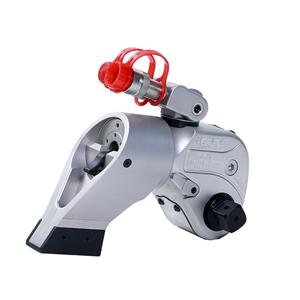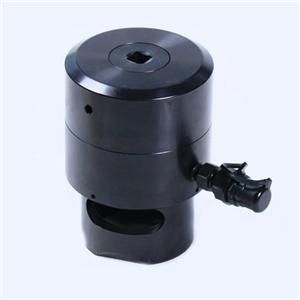Analysis of Thick and Fine Tooth Structure of the Hydraulic Wrench
The thick and fine tooth of the hydraulic wrench are divided according to the ratchet and pawl: with single tooth meshing for the ratchet and pawl, that is called thick tooth, and with multiple teeth meshing for the ratchet and pawl, that is called fine tooth. These two structures have their own advantages and disadvantages. After understanding its advantages and disadvantages and combining with the actual need to choose the correct structure type can the working efficiency and the service life of the hydraulic wrench be improved.
The advantages and disadvantages of the two types are as follows:
Thick tooth hydraulic wrench:
Advantages:
1. The thick tooth hydraulic wrench uses large ratchet teeth. The load capacity of a single tooth is large. It is not easy to break when the material and heat treatment meet the design standards. The service life of the ratchet and pawl is long.
2. The wrench is generally equipped with a counter-force system to prevent the nut from reversing during the return stroke; there is a crisp jingle sound for each stroke, which is convenient for the operator to operate with the sound; the single-tooth meshing structure has been designed with full load strength at the time of design, and tooth collapse will be less.
Disadvantages:
Stucks occasionally occur when the hydraulic wrench is working. Once stuck, it is difficult to remove from the nut, and the accuracy is also poor.
2. Fine tooth hydraulic wrench:
Advantages:
1. High strength: the ratchet and pawl coupling surface of fine tooth hydraulic wrench is large with high precision;
2. High accuracy: The torque accuracy is determined by the last stroke of the set pressure. The last stroke of the fine tooth structure can pass three teeth according to the torsion angle, or only two teeth and one tooth to come closest to the set output torque , And the last stroke of the coarse tooth must either pass one tooth or not, if not, the actual torque does not reach the set torque;
3. Fast speed.
Disadvantages:
1. Small bearing capacity: the fine tooth hydraulic wrench adopts small ratchet design, and the load capacity of a single tooth is smaller than the thick tooth wrench;
2. High processing precision: the fine tooth structure requires high processing accuracy of the ratchet or pawl, otherwise it will increase the wear of the ratchet and pawl and reduce the service life;
3. High probability of tooth fracture: Although its ratchet pawl adopts multi-tooth meshing to increase the load-carrying capacity, the probability of its tooth fracture is still higher than that of the thick tooth structure.
The above comparison proves that both structures have advantages and disadvantages, respectively. Regardless of the different structural design, as long as the design parameters of the product, the selection of raw materials, and the heat treatment process meet the quality standards, the product can be used normally.
Speaking of hydraulic wrenches, "Jingke Hydraulic Wrenches" is well-known in the industry. Our advantages are as follows:
1. One of the few high-tech enterprises in the industry;
2. Several patented technologies;
3. Product quality can compete with imported products, with ISO and CE certification;
4. Rich experience in bolt solutions, and best models recommended according to complex working conditions.




